Few states capture the imagination like Arizona, a land where rugged deserts, towering red rocks, and endless skies shape not only the scenery but the spirit of the place. Known as the Grand Canyon State, Arizona is a tapestry of contrasts: from the scorching Sonoran Desert dotted with towering saguaro cacti, to the snowcapped peaks of the San Francisco Mountains; from bustling cities rich in culture, to ancient ruins whispering of civilizations long gone.
Arizona’s allure lies in its ability to hold deep history and bold modernity side by side. Ancient Native American cultures thrived here, leaving behind cliff dwellings, petroglyphs, and traditions that continue through vibrant tribal nations today. Spanish missionaries, Wild West pioneers, and prospectors added new chapters, creating a state where heritage and myth intermingle with living culture.
For lovers of natural wonders, Arizona is unparalleled. Beyond the Grand Canyon—its most famous jewel—the state offers vast canyons, forested plateaus, volcanic craters, and shimmering lakes. Hikers, photographers, and dreamers alike find endless inspiration in its dramatic landscapes. Wildlife ranges from roadrunners and coyotes to bighorn sheep and bald eagles, thriving across ecosystems that feel worlds apart yet lie within the same borders.
Cities like Phoenix and Tucson pulse with innovation, art, and culinary diversity, while towns such as Sedona, Flagstaff, and Bisbee preserve history and character. Each corner of Arizona holds something unique, whether it’s the silence of the desert under a canopy of stars, the thrill of a rodeo, or the quiet reverence of standing before a centuries-old cliff dwelling.
Arizona is a state of wonder, resilience, and beauty—a land that invites exploration, contemplation, and adventure in equal measure.
Grand Canyon National Park

Few sights on Earth rival the majesty of the Grand Canyon. Carved over millions of years by the Colorado River, this immense chasm stretches 277 miles long, up to 18 miles wide, and over a mile deep.
Its layered cliffs reveal nearly two billion years of geological history, painted in shades of red, orange, and gold that change with the sun’s movement across the sky. Visitors can explore the South Rim, accessible year-round with breathtaking viewpoints like Mather Point and Desert View Watchtower.
The North Rim, open seasonally, offers quieter trails and dramatic overlooks. Adventurers descend into the canyon via trails such as Bright Angel, while rafters tackle the wild Colorado River below. Beyond its physical grandeur, the canyon inspires a sense of spiritual awe—it is a place that humbles and elevates all at once.
Sedona

Nestled among fiery red rock formations, Sedona is both a natural wonder and a cultural haven. Towering sandstone spires like Cathedral Rock and Bell Rock dominate the skyline, drawing hikers, climbers, and photographers from around the world. At sunrise and sunset, the rocks glow with an otherworldly brilliance.
Sedona is also famed for its “vortex” sites, believed by many to emit spiritual energy, making the town a destination for wellness seekers and mystics. Beyond the metaphysical, Sedona boasts art galleries, boutique shops, and a thriving culinary scene.
The scenic Oak Creek Canyon Drive offers one of Arizona’s most beautiful road trips, especially in autumn when sycamores and maples ignite in gold and crimson. Sedona is where nature, art, and spirituality converge in dazzling harmony.
Monument Valley
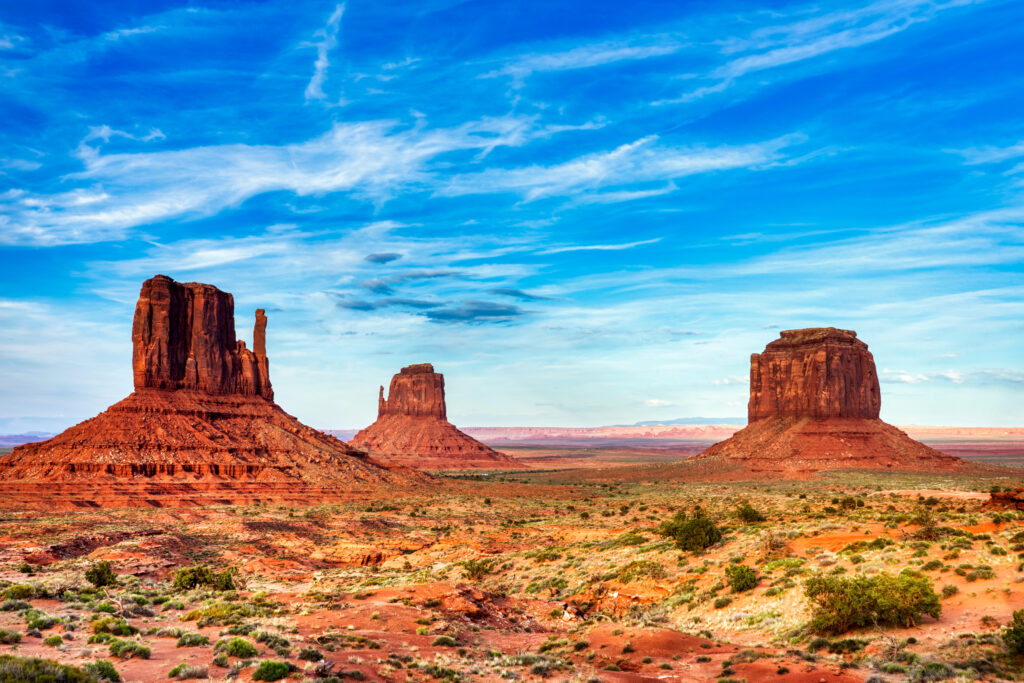
Straddling the Arizona-Utah border, Monument Valley is the iconic vision of the American West. Its towering sandstone buttes, rising hundreds of feet above the desert floor, have been immortalized in countless films, from John Wayne westerns to modern epics.
This sacred land belongs to the Navajo Nation, and guided tours led by Navajo people provide cultural depth and insight into the valley’s history and traditions. The 17-mile scenic drive reveals unforgettable sights like the Mittens and Merrick Butte, while sunrise and sunset transform the valley into a painter’s palette of deep reds and purples.
Monument Valley is not just scenery—it is a place of profound cultural significance and timeless grandeur.
Antelope Canyon

Antelope Canyon, near Page, is one of Arizona’s most photographed natural wonders. This slot canyon, carved by flash floods through Navajo sandstone, is famous for its narrow, winding passageways and flowing, wave-like rock formations.
Sunbeams stream into the canyon at midday, creating shafts of light that illuminate the walls in hues of orange, gold, and violet. Divided into Upper and Lower Antelope Canyon, both sections offer unique experiences: Upper is broader and more accessible, while Lower features ladders and tighter twists. Visiting requires a guided tour, ensuring both safety and respect for this sacred Navajo site.
Walking through Antelope Canyon feels like stepping inside a natural cathedral, where light and stone collaborate in breathtaking beauty.
Petrified Forest National Park

A surreal landscape unfolds in Petrified Forest National Park, where ancient trees turned to stone over 200 million years ago now glitter with quartz crystals in shades of purple, red, and green. The park, part of the Painted Desert, stretches across colorful badlands, mesas, and rolling grasslands.
Trails such as Blue Mesa and Crystal Forest allow visitors to walk among massive petrified logs, some over 100 feet long, remnants of a prehistoric forest once teeming with life. The park also preserves petroglyphs, fossils, and remnants of ancient Puebloan dwellings, offering a window into deep time—both geologic and human. It is a place where the past feels vividly alive, locked in stone and color.
Canyon de Chelly National Monument
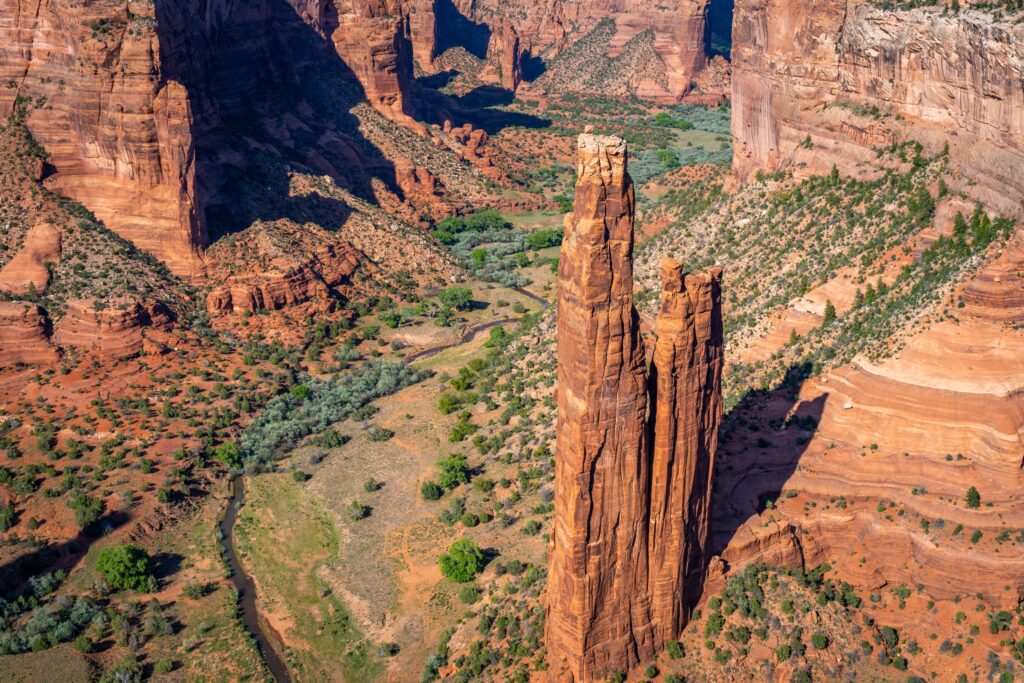
Hidden within the Navajo Nation, Canyon de Chelly is one of Arizona’s most culturally significant landscapes. Its towering sandstone cliffs, some rising over 1,000 feet, shelter ancient cliff dwellings built by Ancestral Puebloans more than 700 years ago.
Among its most iconic sights is Spider Rock, a 750-foot sandstone spire tied to Navajo legend. Unlike many national parks, Canyon de Chelly is still home to Navajo families who farm and raise livestock within its fertile valley.
Visitors can explore rim drives that offer sweeping overlooks or join guided tours led by Navajo guides, who provide insights into the canyon’s history, culture, and sacred significance. Canyon de Chelly is a living place, where past and present meet in profound harmony.
Saguaro National Park

Nowhere symbolizes the American Southwest quite like the saguaro cactus, and Saguaro National Park, near Tucson, protects these giants in their natural desert habitat. Some saguaros rise over 40 feet tall and live for more than 200 years, their arms reaching skyward in almost human-like poses.
The park is divided into eastern and western districts, separated by the city, each offering scenic drives and hiking trails through the Sonoran Desert. In spring, the desert blooms with wildflowers, and saguaros crown themselves with white blossoms—the state flower of Arizona.
The park also teems with wildlife, from coyotes and roadrunners to desert tortoises. To walk among saguaros is to feel the heartbeat of the desert.
Lake Powell
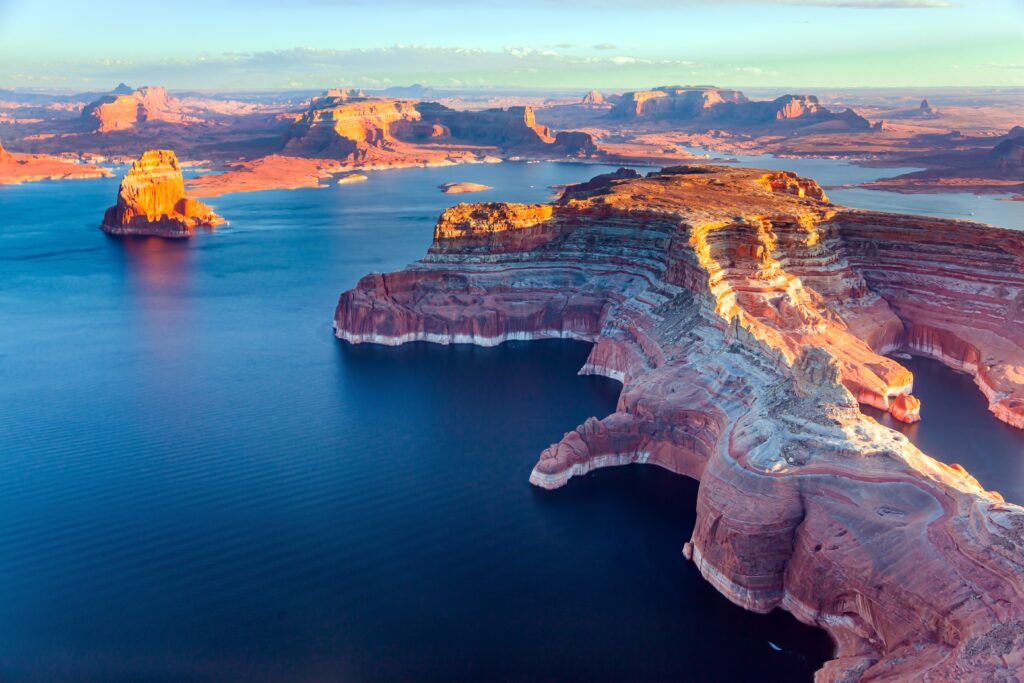
Formed by the construction of Glen Canyon Dam on the Colorado River, Lake Powell is a vast reservoir that winds through dramatic sandstone canyons, creating nearly 2,000 miles of shoreline.
With its turquoise waters contrasting against red rock cliffs, it has become a playground for boating, kayaking, and fishing. Houseboat rentals are especially popular, allowing visitors to explore remote coves and beaches.
Lake Powell also provides access to hidden gems such as Rainbow Bridge, one of the world’s largest natural stone arches. While controversial for its environmental impact, the lake remains a striking blend of human engineering and natural beauty, drawing millions each year.
Hoover Dam
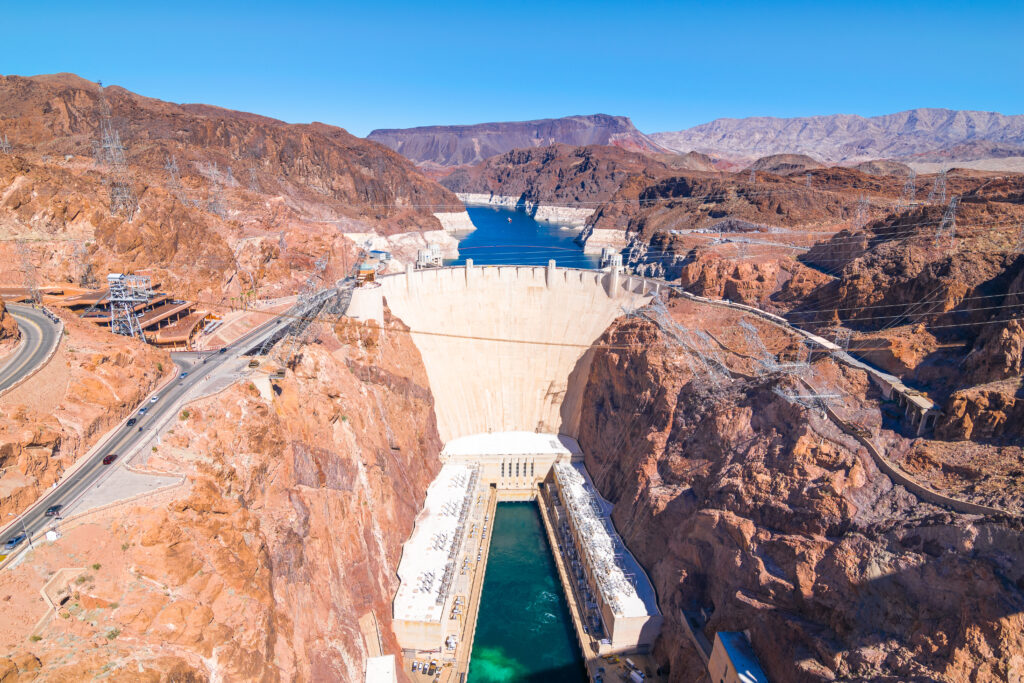
Straddling the Arizona-Nevada border, the Hoover Dam is one of the most iconic feats of 20th-century engineering. Completed in 1936 during the Great Depression, it stands 726 feet tall and holds back Lake Mead, the largest reservoir in the United States.
The dam not only provides hydroelectric power but also irrigation and water supply for millions across the Southwest. Visitors can tour its massive interior, marvel at its Art Deco design, and walk along its crest to experience sweeping views of Black Canyon.
The Hoover Dam symbolizes both ambition and resilience—a monument to human determination set against the rugged desert.
Havasu Falls
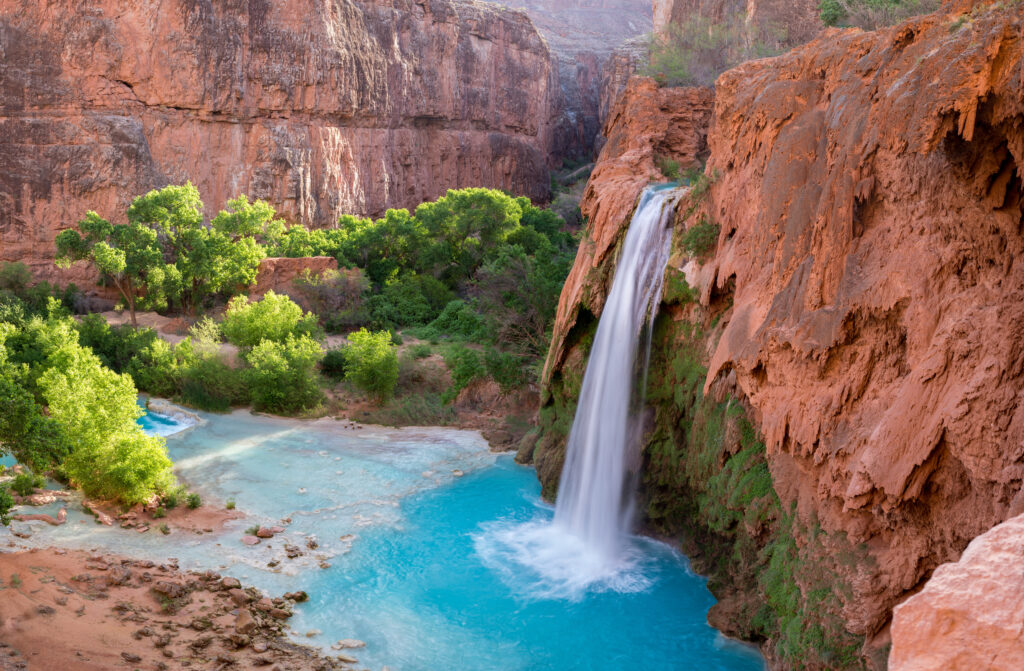
Perhaps Arizona’s most enchanting waterfall, Havasu Falls is located deep within the Havasupai Indian Reservation. Its turquoise-blue waters cascade nearly 100 feet into a travertine pool, framed by red canyon walls—a vision so surreal it seems painted. The falls are reached only by a strenuous hike or horseback ride, making them a pilgrimage for those seeking natural beauty.
Camping near the falls allows visitors to experience the magic of starlit skies, rushing water, and the surrounding desert wilderness. Managed by the Havasupai Tribe, access is limited to protect the fragile environment, making a visit to Havasu Falls both rare and unforgettable.
Tombstone
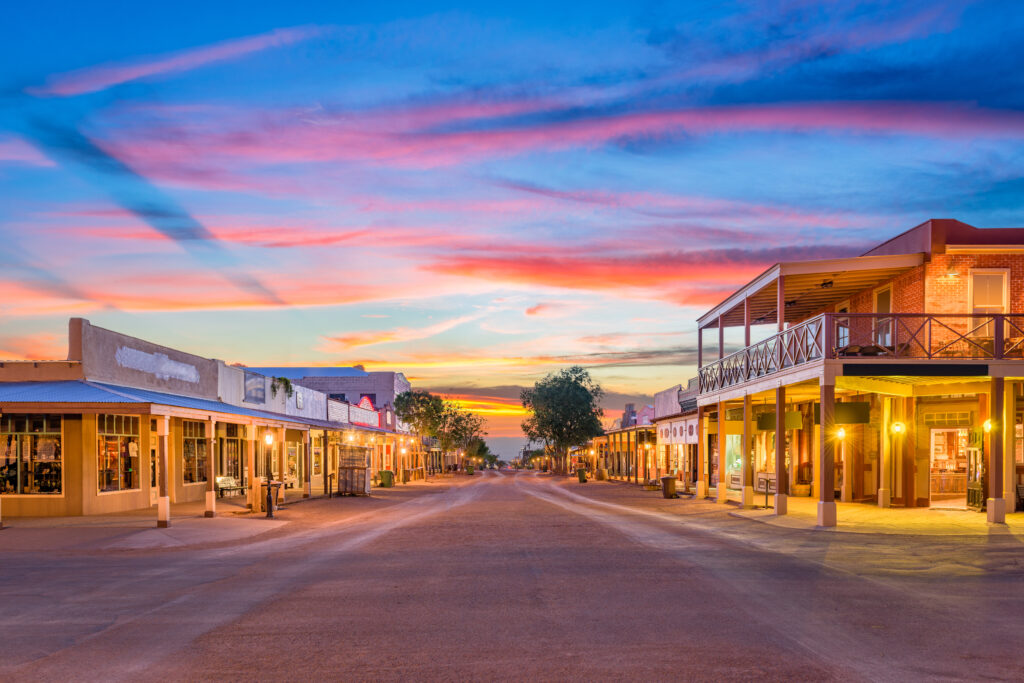
Few towns embody the spirit of the Wild West like Tombstone, where history and legend merge. Famous for the Gunfight at the O.K. Corral, Tombstone was once a booming silver-mining town. Today, visitors walk along wooden boardwalks and through saloons that look much as they did in the 1880s.
Daily reenactments bring the famous gunfight between the Earp brothers, Doc Holliday, and the Clanton gang to life. Attractions such as Boothill Graveyard and the Bird Cage Theatre—reputedly haunted—reveal the town’s rough-and-tumble past. While touristy, Tombstone retains an authentic air of frontier grit, reminding visitors of a time when lawlessness, gold, and grit defined Arizona.
Flagstaff
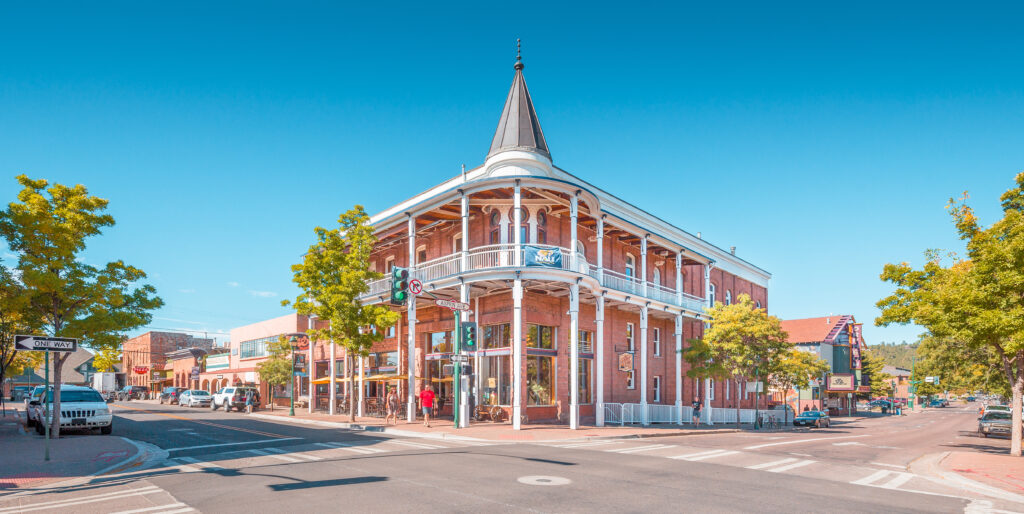
At nearly 7,000 feet above sea level, Flagstaff offers a refreshing alpine contrast to Arizona’s deserts. Surrounded by ponderosa pine forests and the San Francisco Peaks, the city is a gateway to outdoor adventures. In winter, Arizona Snowbowl draws skiers and snowboarders, while summer brings hikers and bikers to mountain trails.
Flagstaff is also a Dark Sky City, with stargazing at the renowned Lowell Observatory, where Pluto was discovered. Its lively downtown brims with breweries, restaurants, and historic buildings, giving it a youthful, vibrant vibe. Flagstaff’s mix of mountain scenery, culture, and science makes it one of Arizona’s most versatile destinations.
Organ Pipe Cactus National Monument

In the far south, along the U.S.-Mexico border, lies Organ Pipe Cactus National Monument, a UNESCO Biosphere Reserve. This remote desert park protects the rare organ pipe cactus, a plant that grows naturally in the U.S. only here. Scenic drives like Ajo Mountain Loop reveal a desert alive with wildlife—javelinas, coyotes, and desert bighorn sheep.
Spring brings bursts of wildflowers, and the night sky dazzles with stars in this remote, unspoiled landscape. Despite its harshness, the Sonoran Desert thrives with life, and the monument stands as a celebration of its resilience and beauty. For those seeking solitude and authenticity, Organ Pipe is unmatched.
Jerome
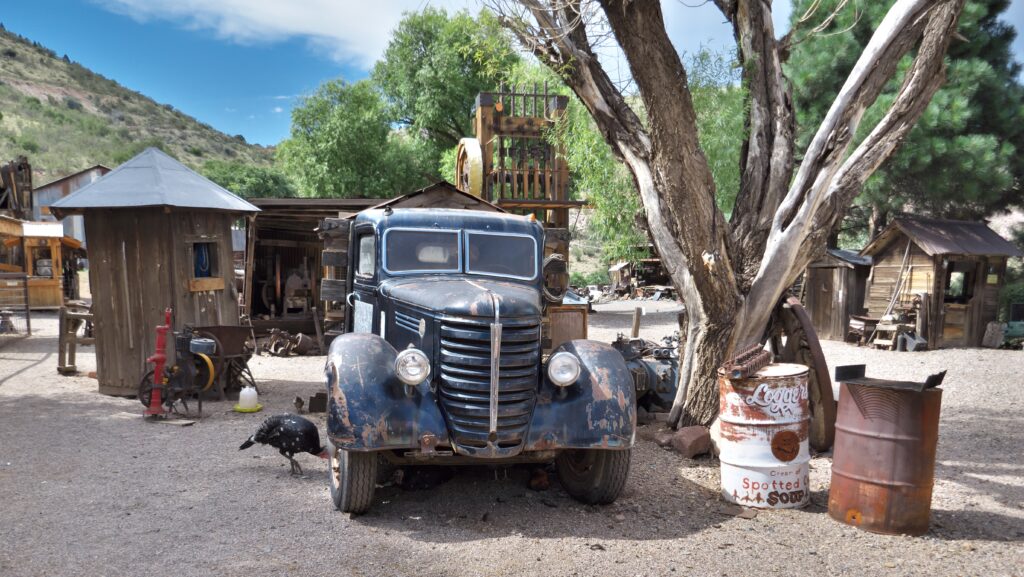
Perched precariously on Cleopatra Hill, Jerome is a former mining town turned artist haven. Once dubbed the “Wickedest Town in the West” for its saloons and rowdiness, Jerome nearly became a ghost town after copper mining declined. Today, it thrives with galleries, boutiques, and quirky shops that draw creative souls.
Many of its old buildings still stand, some in ruins, adding a ghostly charm. The Jerome State Historic Park preserves the story of its mining boom, while ghost tours play up tales of spirits that supposedly linger. With panoramic views of the Verde Valley and a bohemian vibe, Jerome is a place where history, art, and mystery coexist.
Meteor Crater
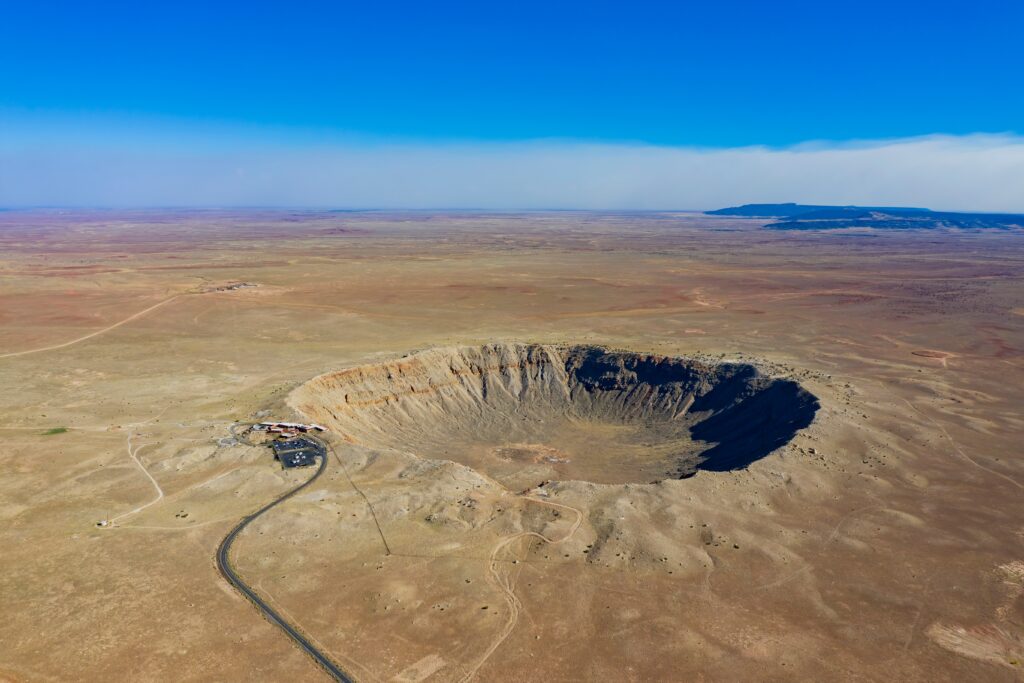
One of the best-preserved impact sites on Earth, Meteor Crater near Winslow is a dramatic reminder of cosmic power. Nearly 50,000 years ago, a massive iron meteorite slammed into the high desert, creating a crater 3,900 feet wide and 560 feet deep.
Today, visitors can view the site from observation decks, walk guided rim trails, and explore a museum with interactive exhibits on meteors and space science. The crater even played a role in astronaut training for the Apollo missions. Standing at the rim, gazing into the vast depression, visitors feel both the fragility of Earth and the immensity of the universe.
Prescott

Nestled in Arizona’s central highlands, Prescott combines Old West charm with pine-scented mountain air. Once the territorial capital, it retains a historic downtown anchored by Whiskey Row, a lively street of saloons, shops, and galleries. Courthouse Plaza, with its grassy lawns and shaded benches, hosts festivals and community gatherings year-round.
Prescott’s location makes it a hub for outdoor activities: hiking the Granite Dells’ strange rock formations, kayaking on Watson Lake, or riding trails through ponderosa forests. With four mild seasons, a friendly atmosphere, and a vibrant arts scene, Prescott feels like a quintessential small Western city that has embraced both its heritage and its natural setting.
Bisbee

Once one of the richest mining towns in the U.S., Bisbee has transformed into a colorful, artistic community. Its hillside streets are lined with Victorian homes, quirky shops, and vibrant murals. The town’s mining heritage is preserved in the Queen Mine Tour, where visitors don hard hats and descend into old copper tunnels.
Today, Bisbee thrives on creativity, with art galleries, music venues, and festivals attracting free spirits. It is also famed for its ghost stories—many swear its historic hotels are haunted. With a blend of mining grit, artistic flair, and eccentric charm, Bisbee is unlike anywhere else in Arizona.
Chiricahua National Monument

Dubbed the “Wonderland of Rocks,” Chiricahua National Monument is a geological masterpiece of towering stone pinnacles, balancing rocks, and dramatic spires. Formed by volcanic eruptions millions of years ago, the landscape today resembles a natural sculpture garden. Trails like the Echo Canyon Loop lead hikers through narrow passageways and around surreal formations.
The monument also preserves the history of the Chiricahua Apache, including figures like Cochise and Geronimo, who resisted U.S. expansion into their lands. Wildlife such as coatimundis and elegant trogons add to the park’s uniqueness. Remote and otherworldly, Chiricahua offers both natural wonder and cultural depth.
Lake Havasu City
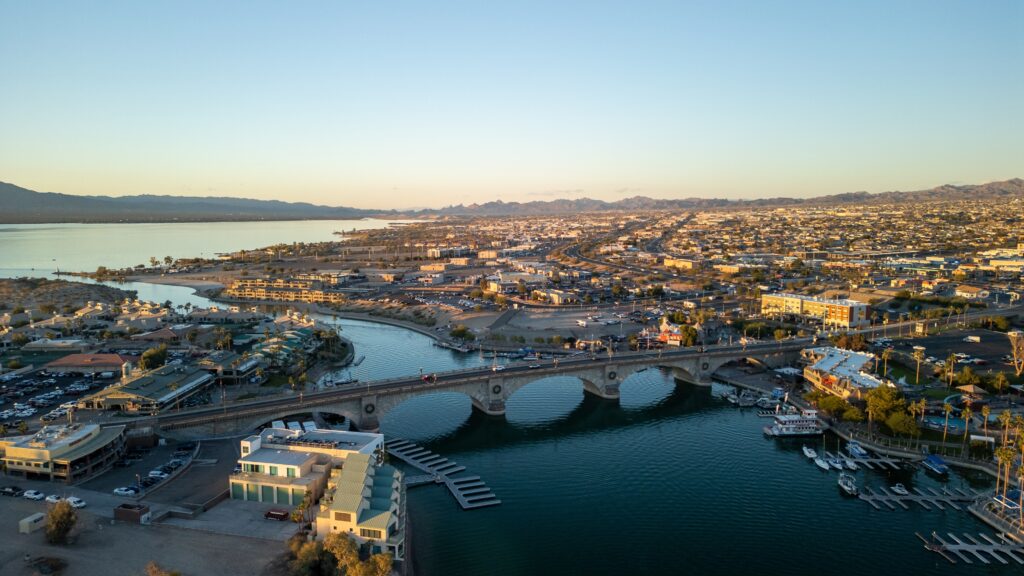
In western Arizona, Lake Havasu City is a desert oasis famed for water recreation and an unlikely landmark—the London Bridge. Imported from England and reconstructed in the 1970s, the bridge spans the Colorado River, connecting the city with an island playground of marinas, beaches, and parks. Lake Havasu itself offers boating, fishing, and jet skiing, drawing visitors from across the Southwest.
The city is particularly popular for spring break, but beyond the parties lies a laid-back atmosphere of sunny days and sparkling water. Lake Havasu City is a blend of desert leisure and novelty, where history meets recreation in unexpected fashion.
Kartchner Caverns State Park
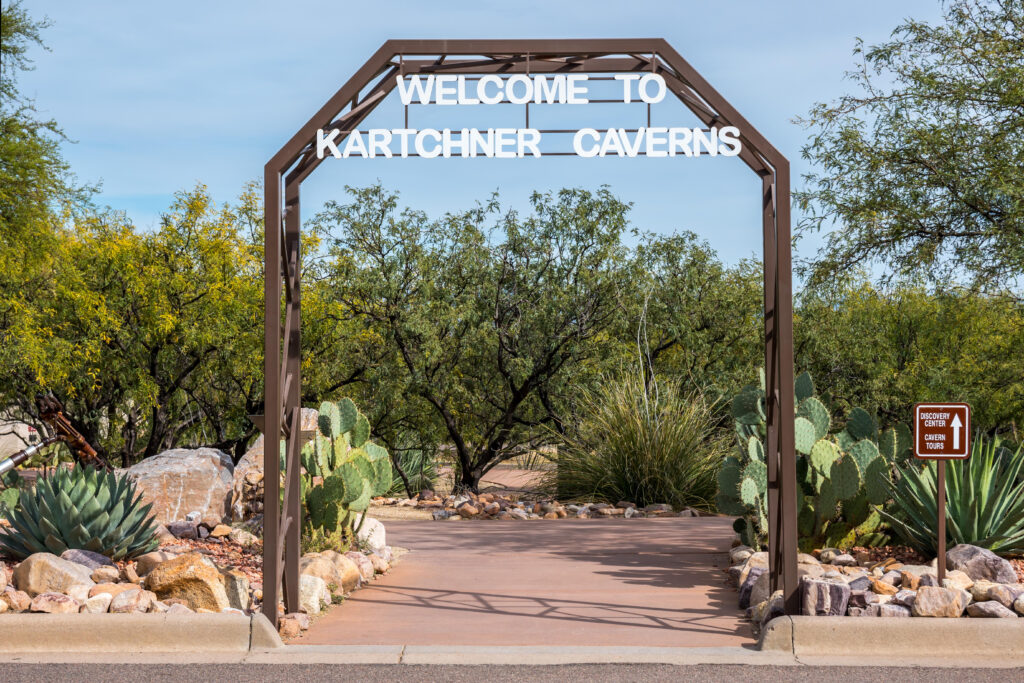
Discovered in 1974 and kept secret for years to protect its fragile formations, Kartchner Caverns are among the most stunning cave systems in the U.S. This living cave features stalactites, stalagmites, and delicate formations still growing from slow drips of mineral-rich water. Guided tours showcase rooms like the Rotunda and Throne, where massive columns inspire awe.
The park also emphasizes conservation, ensuring the caverns remain pristine for future generations. Above ground, hiking trails offer desert scenery, but it is underground where Kartchner’s magic truly lies. The caverns reveal a hidden world of wonder, a reminder of nature’s artistry beneath our feet.
Tucson
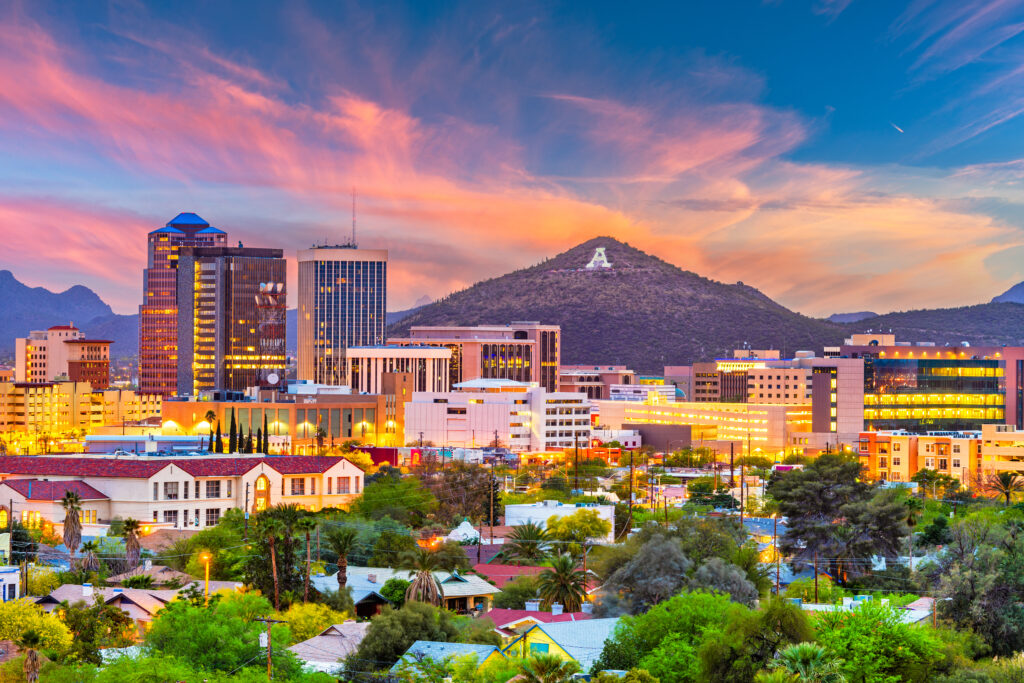
Surrounded by mountains and desert, Tucson is a city where history, culture, and nature intertwine. With more than 300 days of sunshine a year, it is an outdoor lover’s paradise, bordered by the Catalina, Rincon, and Tucson Mountains.
Tucson is also home to Saguaro National Park, the Arizona-Sonora Desert Museum, and Mission San Xavier del Bac, a dazzling 18th-century Spanish colonial church known as the “White Dove of the Desert.” Its vibrant downtown pulses with art, music, and cuisine—Tucson was the first U.S. city named a UNESCO City of Gastronomy, thanks to its mix of Native, Mexican, and frontier food traditions.
With its balance of heritage and innovation, Tucson embodies the soul of southern Arizona.
Phoenix
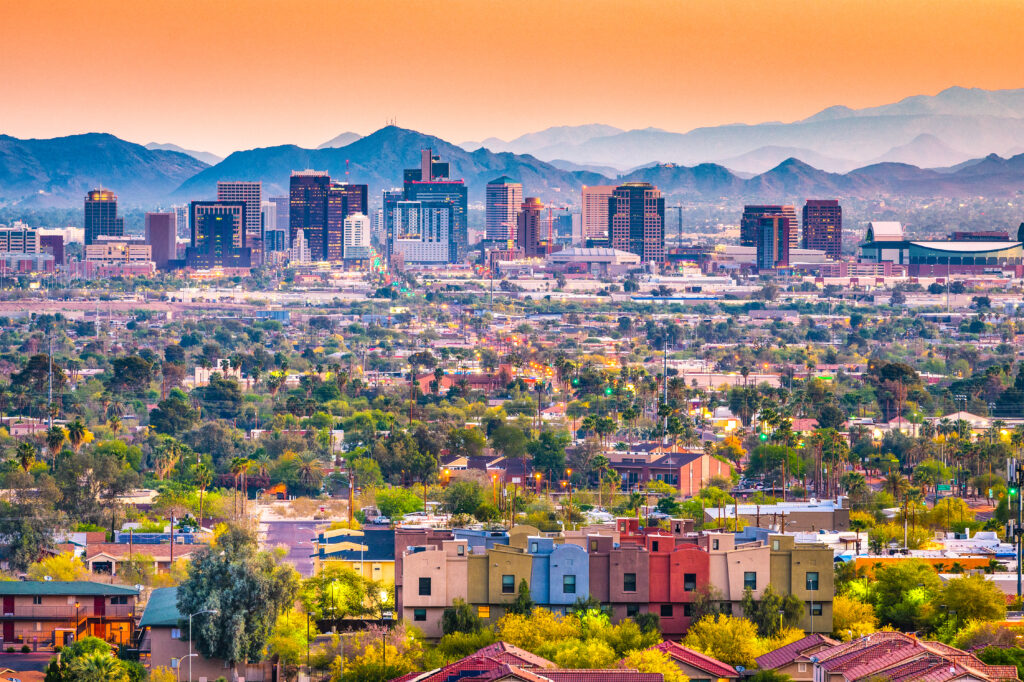
Arizona’s capital, Phoenix, is one of the fastest-growing cities in the nation, yet it remains closely tied to its desert roots. Skyscrapers rise against a backdrop of rugged mountains, while desert preserves like Camelback Mountain and South Mountain Park offer hiking within minutes of downtown.
The Heard Museum and the Phoenix Art Museum showcase Native American culture and world-class art, while the Desert Botanical Garden highlights the beauty of arid landscapes. Phoenix is also a hub of golf courses, luxury resorts, and culinary innovation. As both a cosmopolitan metropolis and a desert retreat, it captures the essence of modern Arizona.
Glen Canyon Dam

Towering above the Colorado River near Page, Glen Canyon Dam is an engineering marvel that created Lake Powell. Completed in 1966, it stands 710 feet tall and provides hydroelectric power to much of the region. Tours inside the dam reveal its inner workings, while viewpoints on the bridge offer dramatic vistas of the canyon and the lake beyond.
While controversial for flooding much of Glen Canyon’s natural beauty, the dam remains a striking testament to human ambition and ingenuity. For visitors, it serves as both a destination in itself and a gateway to Lake Powell’s endless recreational opportunities.
Canyon Lake
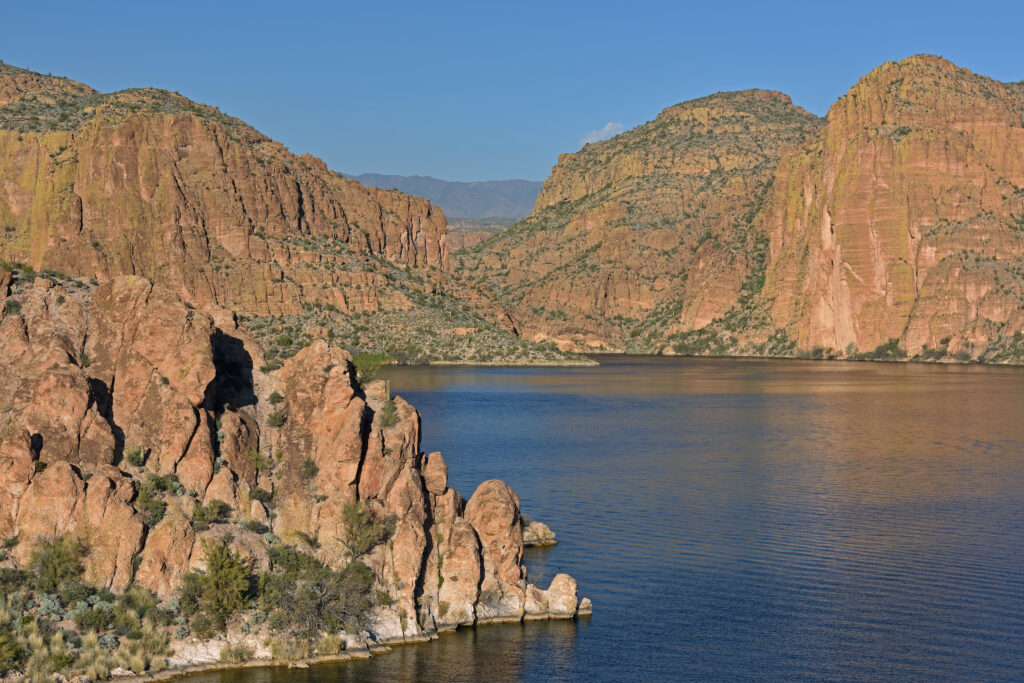
Set among the rugged Superstition Mountains east of Phoenix, Canyon Lake is a striking reservoir framed by golden cliffs and desert hills. Created by the Salt River Project, it is one of four lakes along the Apache Trail and is beloved for boating, fishing, and scenic cruises aboard the Dolly Steamboat.
The lake’s sparkling waters contrast beautifully with the surrounding desert, especially at sunrise and sunset. Wildlife such as bighorn sheep and bald eagles often appear along its shores. For day-trippers from Phoenix, Canyon Lake offers a peaceful escape where desert scenery and water recreation meet.
Painted Desert

Stretching across northern Arizona, the Painted Desert is a dreamscape of multicolored badlands. Layers of sandstone, shale, and volcanic ash create a palette of pinks, purples, reds, and oranges that shift with the changing light.
This surreal landscape extends into Petrified Forest National Park, but much of it remains remote and wild. Trails and overlooks offer views that seem almost otherworldly, while the desert itself tells a story of millions of years of geologic change. The Painted Desert is both stark and beautiful—a place where silence, color, and vast horizons create an atmosphere of timeless wonder.
Oak Creek Canyon
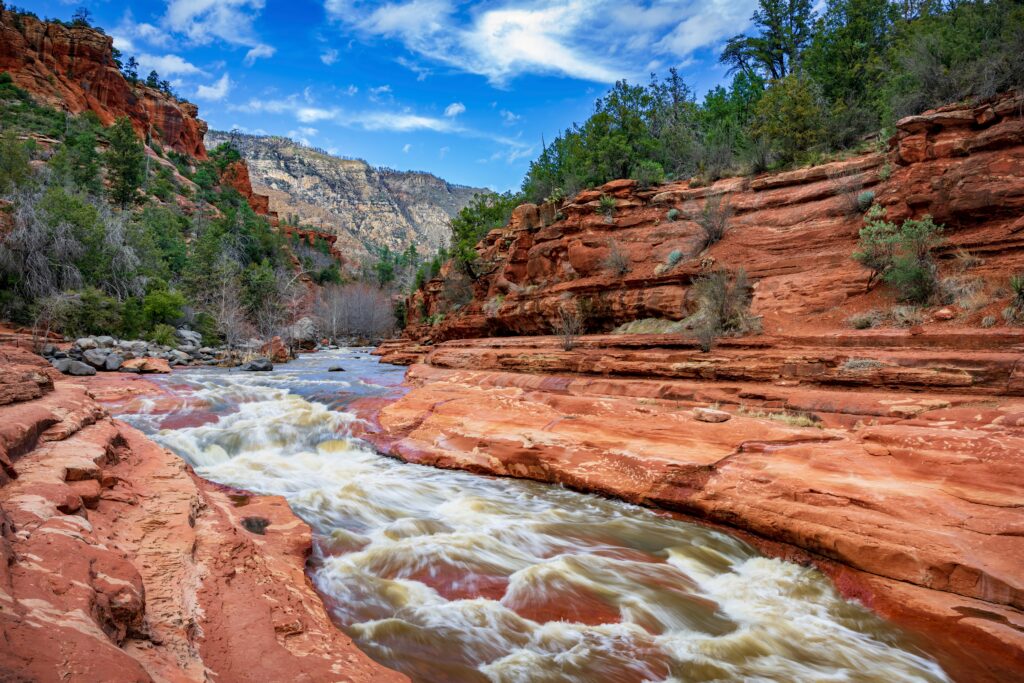
Often called the “little cousin of the Grand Canyon,” Oak Creek Canyon is a lush, winding gorge that stretches between Flagstaff and Sedona. The scenic drive along Highway 89A offers dramatic switchbacks, panoramic views, and access to trails that descend into forests of ponderosa pines and sycamores.
In summer, the popular Slide Rock State Park invites visitors to cool off in natural rock water slides along the creek. The canyon is especially enchanting in autumn, when its trees blaze with fiery reds and golds, a rarity in the desert Southwest. Oak Creek Canyon blends rugged rock formations with tranquil streams, creating a serene yet adventurous escape.
Sunset Crater Volcano National Monument
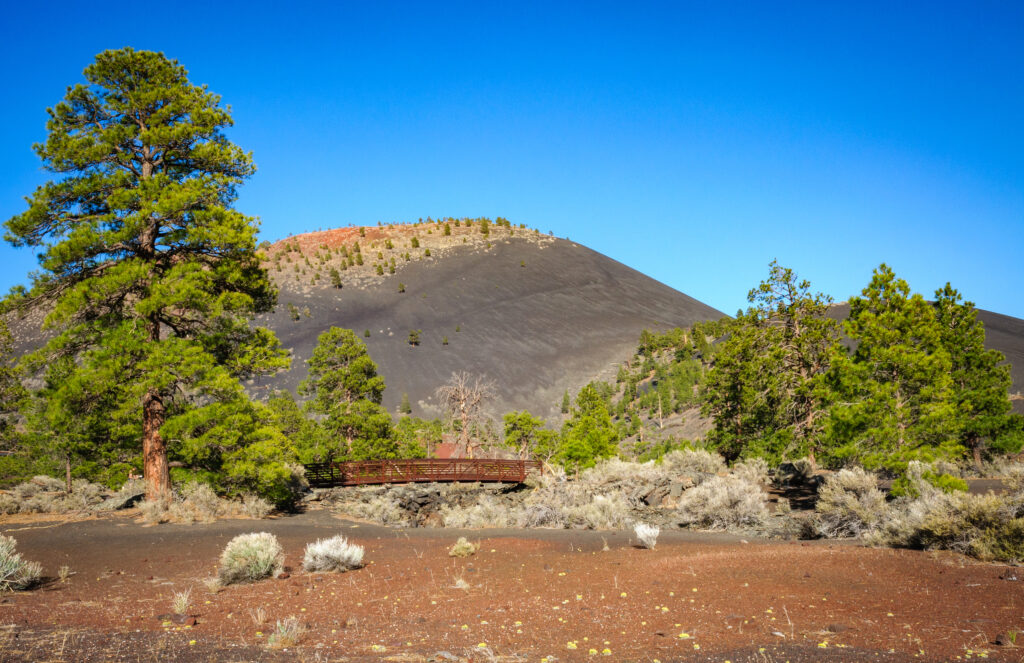
Just north of Flagstaff lies Sunset Crater Volcano, a dramatic cinder cone formed by an eruption around 1085 AD. Its black basaltic lava fields and striking red-and-orange rim create a stark, alien landscape that still feels fresh despite being centuries old. Trails such as the Lava Flow Trail wind through frozen rivers of rock, while interpretive signs explain the eruption’s impact on local ecosystems and native peoples.
The eruption forced nearby Sinagua communities to adapt, and their legacy is preserved at nearby Wupatki ruins. Sunset Crater is a reminder of Arizona’s fiery volcanic past, standing as a striking geological landmark in the state’s high country.
Apache Trail
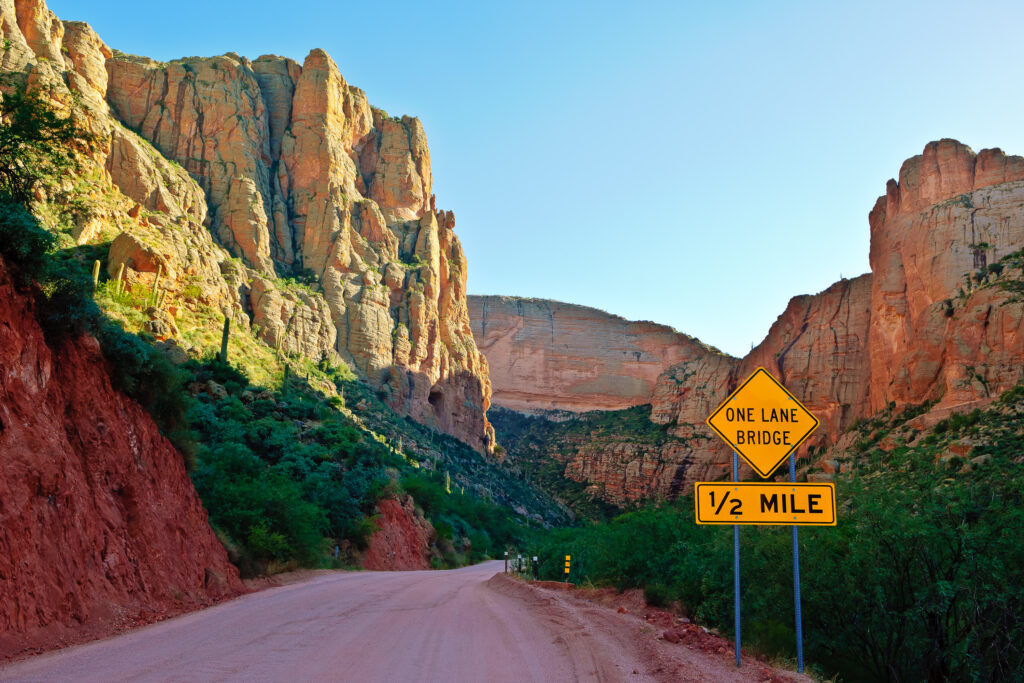
The historic Apache Trail is one of Arizona’s most scenic drives, winding through the Superstition Mountains and past rugged desert cliffs. Originally a stagecoach route, the trail now takes travelers on a breathtaking journey past Canyon Lake, Apache Lake, and the Salt River. Along the way are historic towns like Tortilla Flat, once a stage stop, now a quirky outpost with saloon-style charm.
The unpaved sections add adventure, with dramatic switchbacks and sweeping views of jagged peaks and deep canyons. For those seeking both history and raw desert beauty, the Apache Trail delivers an unforgettable journey.
Prescott National Forest
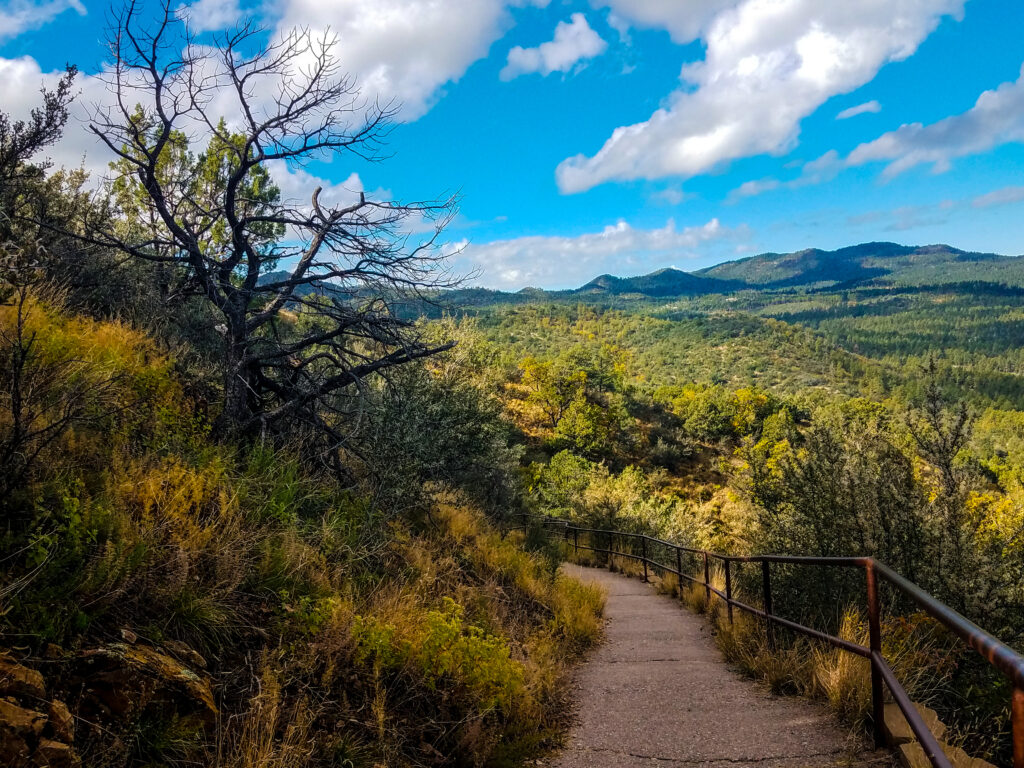
Spanning over 1.25 million acres, Prescott National Forest offers a refreshing blend of pine forests, mountains, and desert grasslands. Trails wind through landscapes dotted with granite boulders, rivers, and lakes, making it a playground for hiking, horseback riding, and camping.
The forest includes landmarks like the Bradshaw Mountains and Lynx Lake, where fishing and boating provide peaceful retreats. Wildlife is abundant, with elk, deer, and even black bears roaming its varied terrain. For those looking to escape city life, Prescott National Forest delivers wide-open spaces and tranquil beauty, showcasing Arizona’s diversity beyond the desert.
Mission San Xavier del Bac
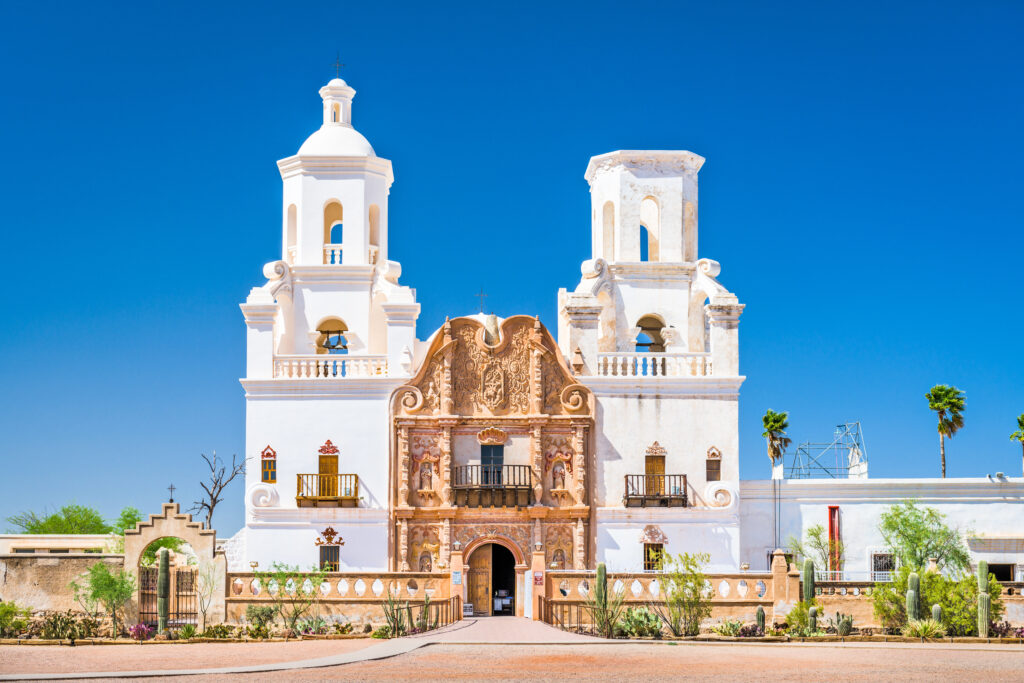
South of Tucson lies Mission San Xavier del Bac, often called the “White Dove of the Desert.” Founded in 1692 by Spanish Jesuits, the mission stands as one of the finest examples of Spanish colonial architecture in the United States.
Its gleaming white façade, twin bell towers, and richly decorated interior with intricate carvings and paintings make it a masterpiece of religious art. The mission remains active, serving the Tohono O’odham community and welcoming visitors from around the world.
Walking through its cool halls and quiet courtyards offers both beauty and reverence, a living link to Arizona’s cultural and spiritual heritage.

